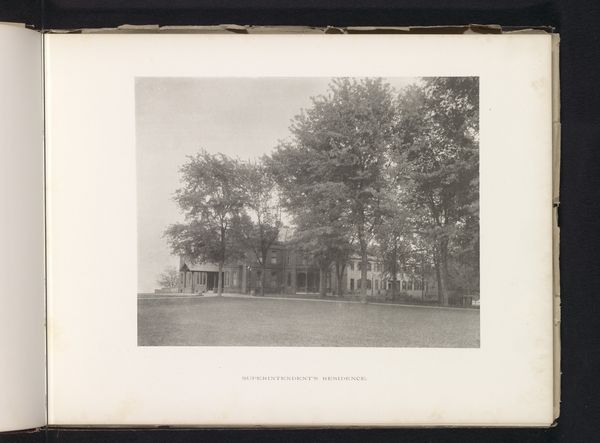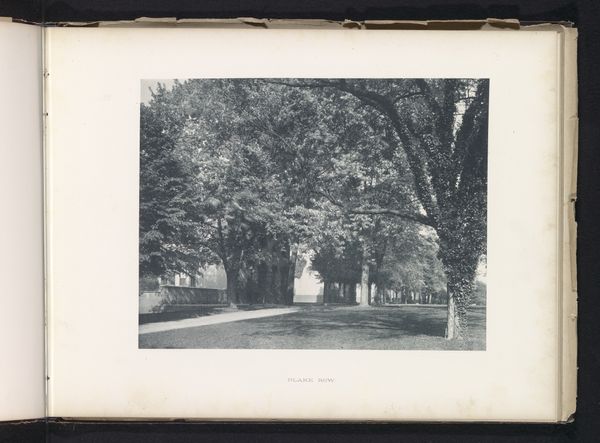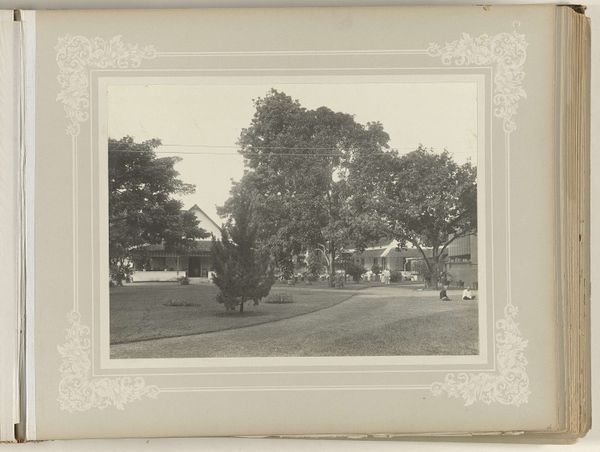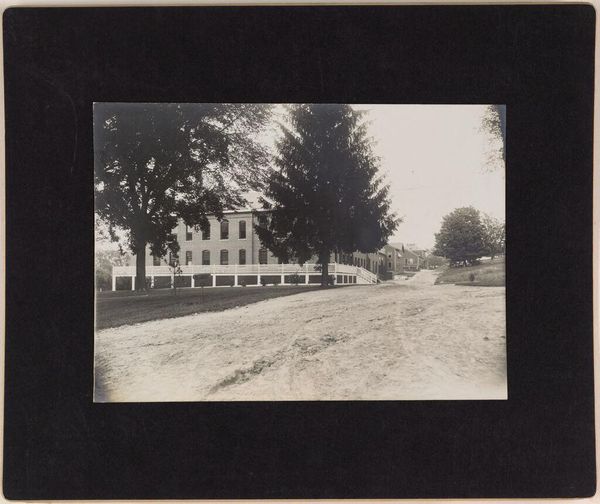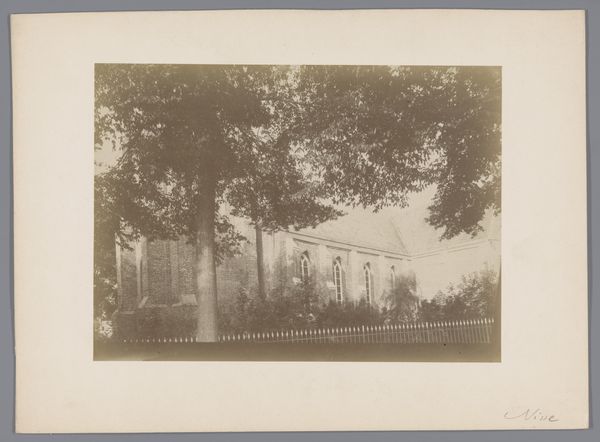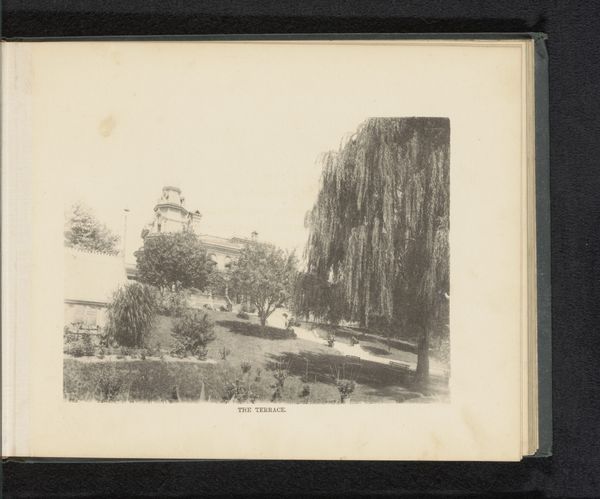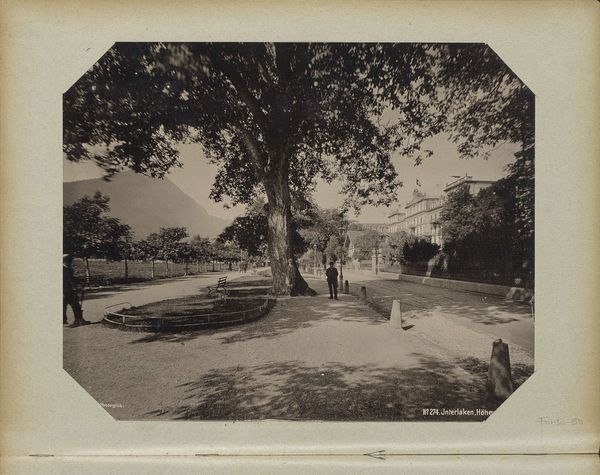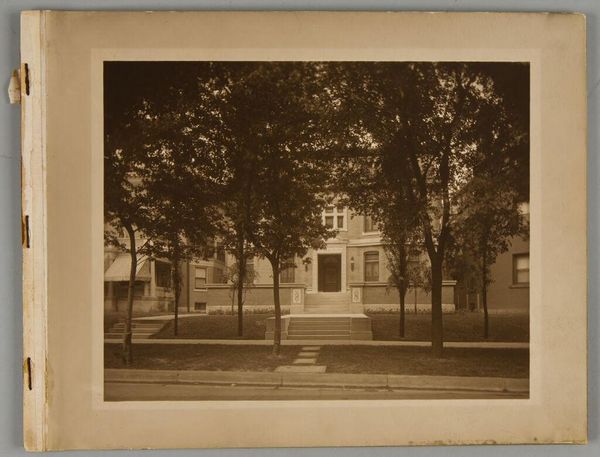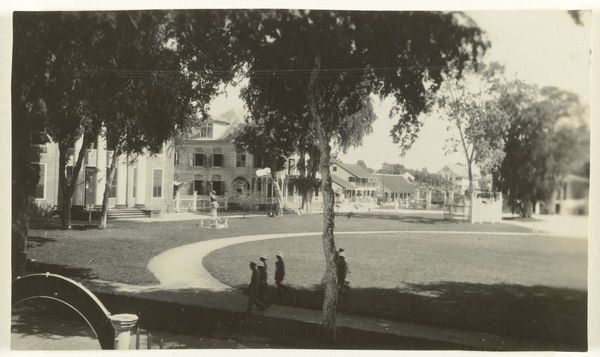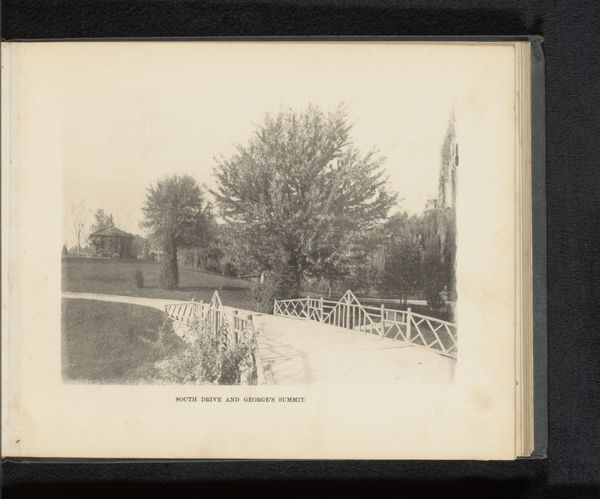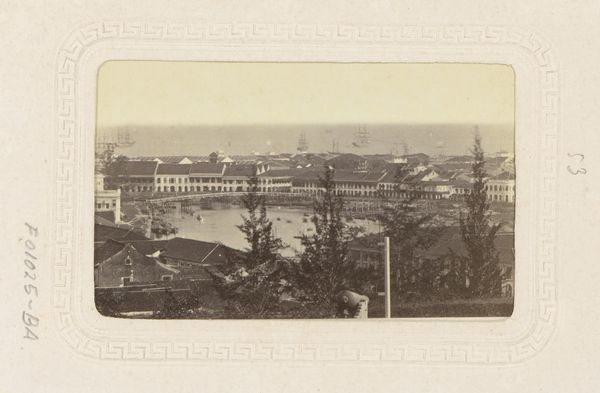
Dimensions: height 85 mm, height 52 mm
Copyright: Rijks Museum: Open Domain
Editor: This albumen print, "Laan met gracht te Batavia" created by Woodbury & Page between 1857 and 1880, portrays a tranquil canalside scene. The stillness of the water and the orderly composition create a peaceful mood, but the high contrast and visible emulsion layers hint at its age and the process behind its creation. What do you see in this piece? Curator: This photograph gives us insight into the materiality of colonial representation. Look closely at the albumen print itself – the layering, the chemical processes. Photography, originally a Western technology and industry, became a tool used to document and classify colonized spaces. How did its production influence the consumption of these images back in Europe? Editor: That's an interesting point. So the *process* of creating this image, the "how," is more important than just *what* is depicted? Curator: Exactly. Consider the labor involved, the chemical resources, the infrastructure required to produce this image in Batavia and then disseminate it. It's not just a pretty picture of a canal; it’s a product of a complex colonial economic system. Were local populations included in its making? Whose stories get told? Editor: So it is more like looking at how the image reinforces the values that the photographer had? Also, how it might influence the views and knowledge back home? Curator: Precisely! Think about how photography, through the physical object, and distribution networks, shaped the consumption and perception of Batavia in Europe. Who was the image made *for*, and what narratives about Batavia did it help to build and sustain through these prints, impacting local culture and resources? Editor: It definitely shifts my perspective. I was focused on the visual beauty, but I understand it represents more complex structures. Thank you! Curator: Indeed. Examining the image through the lens of its materiality reveals the intricate ties between artistic expression and economic realities. It can inform a more critical approach to images like this in the future!
Comments
No comments
Be the first to comment and join the conversation on the ultimate creative platform.

